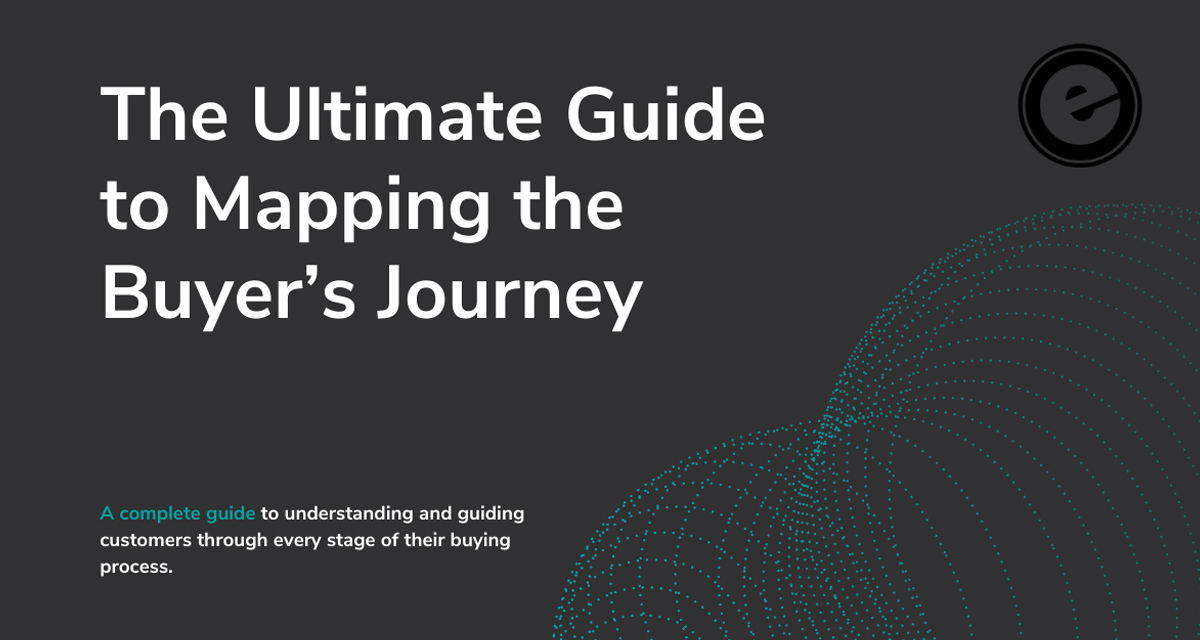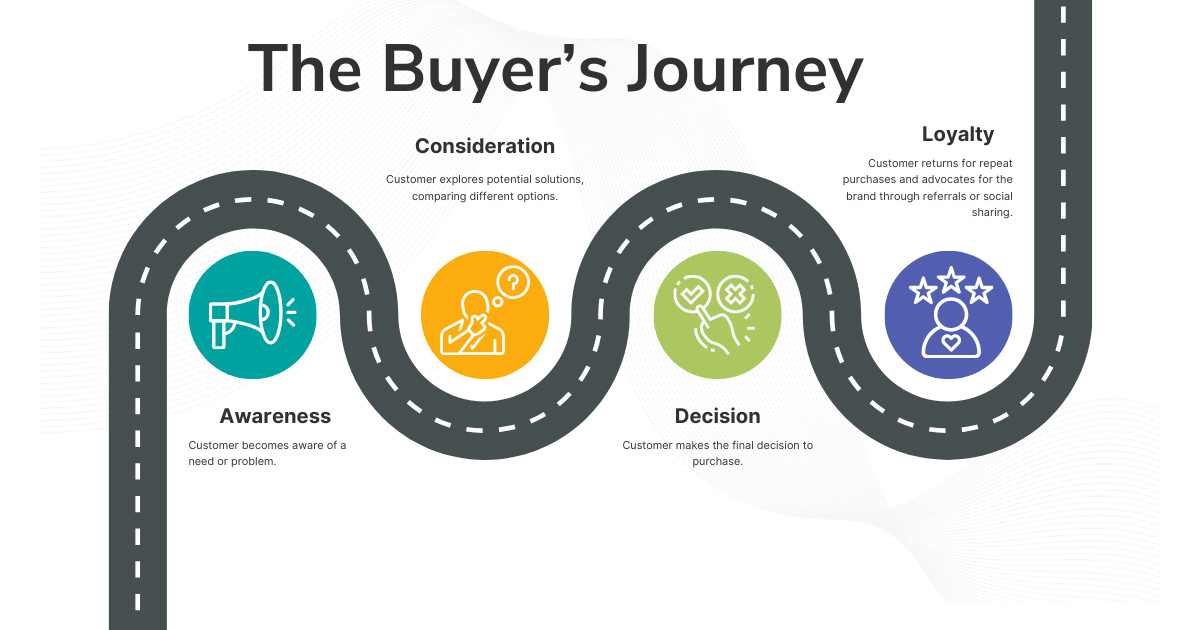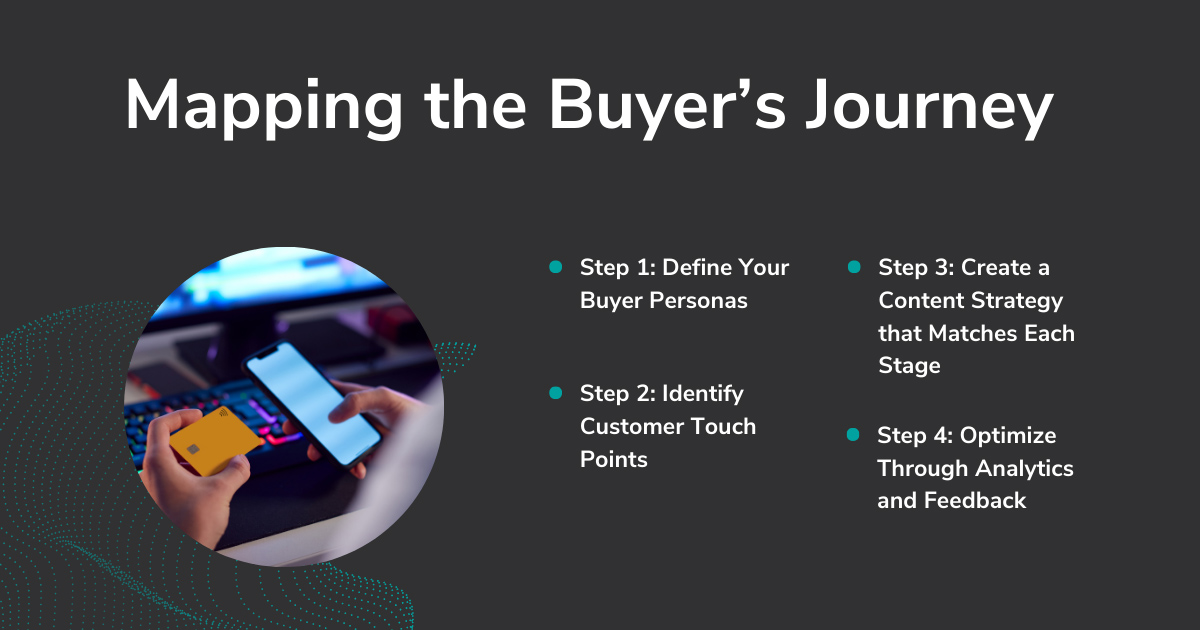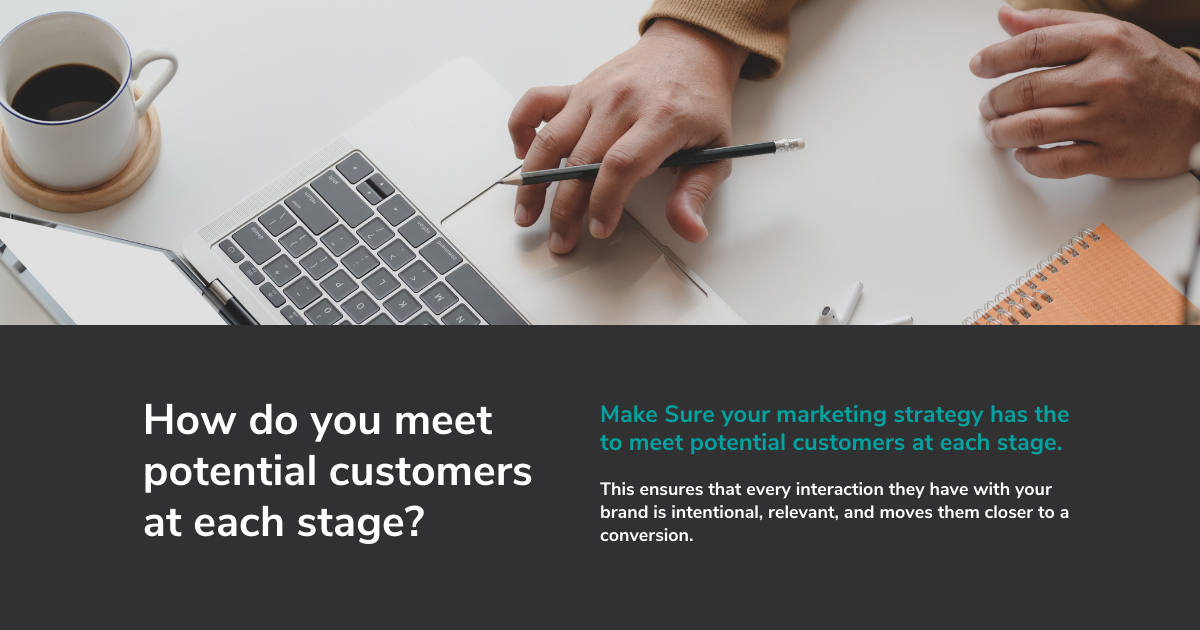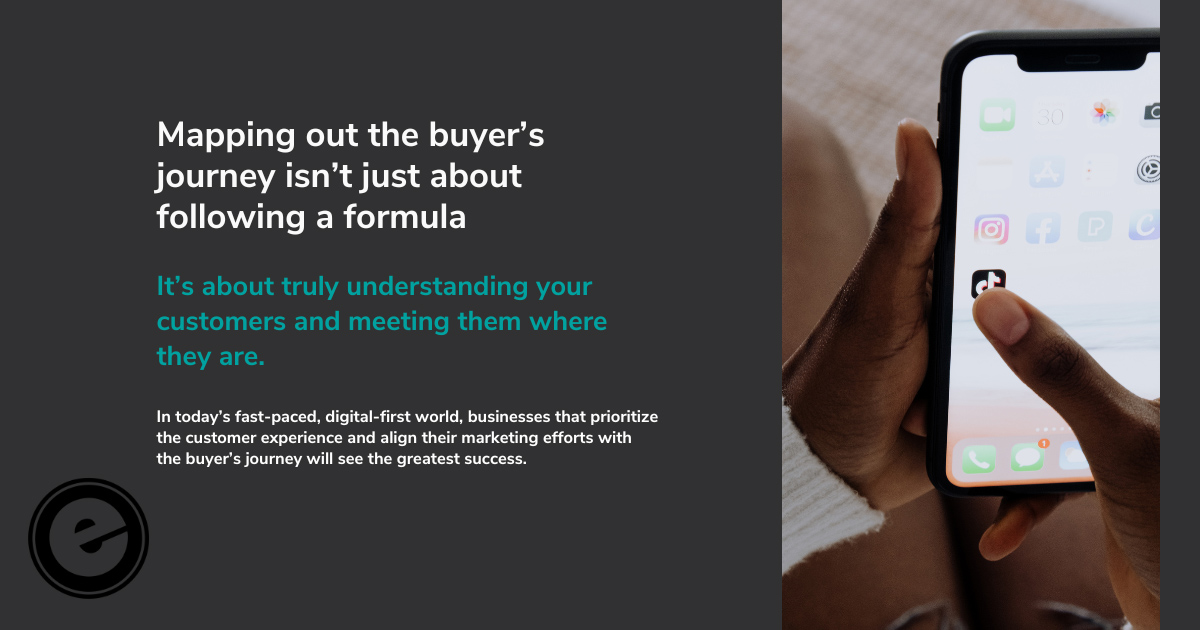As marketers, we often get caught up in the latest trends and buzzwords, but here’s the deal: the buyer’s journey isn’t just another trend. It’s the foundation of any effective marketing strategy, and if you’re not mapping it out, you’re leaving a lot of money on the table.
Take it from me—here at Eminent SEO, we’ve seen first-hand how a well-planned buyer’s journey can transform a business’s relationship with its audience. When we know exactly where a customer is in their journey, we know how to meet them with the right content, at the right time. This isn’t guesswork; it’s about strategy, data, and connecting with your audience on a human level.
By understanding your customers’ needs at every stage of the journey, you can create personalized experiences that not only increase conversions but also foster long-term loyalty. In this guide, we’re going to break down how you can map out your buyer’s journey and use it to craft a seamless marketing strategy that aligns with your customer’s path from awareness to decision.
Understanding the Buyer’s Journey: The Foundation of Customer-Centric Marketing
At its core, the buyer’s journey is all about understanding how your potential customers move from not knowing your brand to becoming loyal advocates. It’s the roadmap of their decision-making process, and knowing this roadmap allows you to engage them at every critical moment.
Today’s customers expect more. They demand personalized interactions and content that speaks directly to their pain points. And guess what? That’s where mapping the buyer’s journey becomes a game-changer. In fact, businesses that focus on providing personalized customer experiences report seeing nearly a 10% increase in revenue, proving that putting your customers at the center of your marketing strategy isn’t just good practice—it’s a financial win.
So, what exactly is the buyer’s journey?
It’s the process buyers go through when deciding to purchase a product or service, and it typically unfolds in three stages, but I added a bonus fourth:
- Awareness – When a customer first realizes they have a problem or need.
- Consideration – When they begin evaluating different options to solve their problem.
- Decision – When they make their final choice and decide which solution to purchase.
- Post-Decision (Loyalty) – When customers engage in repeat purchases and advocate for the brand through referrals or social sharing.
The businesses that succeed in today’s crowded market are the ones that masterfully align their marketing strategies to these four stages. If you want to build trust, develop relationships, and increase customer lifetime value, you need to guide them through the entire journey, including the post-purchase phase.
At Eminent SEO, we always emphasize the importance of understanding where your customers are in their journey. This enables us to create more targeted content, whether that’s a blog post, a social media campaign, or a lead-nurturing email. For example, our approach to a customer-centric content strategy is grounded in this understanding. We don’t just think about the product; we think about the customer’s needs and how we can guide them through the entire process, including after the purchase.
The Four Key Stages of the Buyer’s Journey
The buyer’s journey is divided into four distinct stages, each requiring a different approach to content, communication, and engagement. Understanding what your potential customer is thinking and feeling at each stage allows you to deliver the right message at the right time.
Let’s break down these stages and explore how you can optimize your marketing strategy for each one.
1. Awareness: Understanding the Problem
The Awareness stage is the beginning of the buyer’s journey. At this point, potential customers may not even realize they have a problem—they’re just starting to sense that something isn’t quite right. This is when they begin looking for information that helps them define their issue or need.
Your goal at this stage is to attract attention and educate your audience. Content is king here—you want to offer resources that help people better understand their challenges without pushing your product too hard. Think educational blog posts, informative infographics, or social media content that speaks to a broad audience. Search engine optimization (SEO) plays a crucial role in ensuring your content gets discovered. If your brand doesn’t appear in those early search results, you’re missing out on valuable opportunities to make a first impression.
At Eminent SEO, we’ve seen how top-of-funnel content can make all the difference. When we help clients with their content strategies, we focus on creating resources that address the early questions their audience has.
Actionable Tips:
- Create educational blog posts that answer your audience’s most common questions.
- Use SEO to ensure your content is easily discoverable.
- Focus on being helpful, not salesy—this is not the time to pitch your product but to build trust.
2. Consideration: Exploring Solutions
Once your potential customer understands their problem, they move into the Consideration stage, where they begin actively researching solutions. This is the stage where they’re comparing different options, weighing the pros and cons, and figuring out which solution will best meet their needs.
Now’s the time to showcase your expertise. You need to present your brand as a credible, trustworthy option. This is where content like case studies, comparison guides, how-to videos, and whitepapers can shine. It’s about positioning your product or service as the best solution, but in a way that’s still informative and value-driven.
Here at Eminent SEO, we create a lot of middle-of-funnel content that helps guide potential customers through this decision-making process. For instance, our case studies have been a key asset for clients looking to establish credibility. Sharing real results can provide the proof your audience needs to feel confident in considering your brand.
Actionable Tips:
- Provide case studies and customer testimonials that highlight success stories.
- Offer comparison guides to help potential buyers weigh their options.
- Use email nurturing campaigns to keep your brand top-of-mind as prospects explore solutions.
3. Decision: Choosing the Best Solution
Finally, we arrive at the Decision stage. The buyer has done their research, compared their options, and is now ready to make a purchase. This is where trust becomes the most important factor. The potential customer is looking for reassurance that they’re making the right choice—this could be the tipping point that converts them into a loyal customer.
At this stage, your goal is to make the buying process as simple and frictionless as possible. Clear calls-to-action (CTAs), demos, free trials, and strong customer support can make a huge impact. In fact, a smooth and supportive experience at this point can differentiate your brand from competitors and seal the deal.
One of the ways we help brands at Eminent SEO convert their leads is by focusing on building trust. Whether that’s through personalized follow-up emails, offering potential customers product demos, or showcasing third-party reviews and testimonials, we focus on creating a positive, low-friction buying experience.
Actionable Tips:
- Make your CTAs crystal clear and easy to follow—don’t overwhelm buyers with too many choices.
- Offer product demos or free trials to reduce the perceived risk of choosing your brand.
- Leverage testimonials and reviews to build last-minute trust and remove buyer hesitation.
4. Post-Decision: Building Loyalty and Advocacy
After the purchase, your focus should shift to building long-term relationships. In the Post-Decision stage, businesses can encourage repeat purchases and turn satisfied customers into brand advocates. By offering personalized follow-up emails, loyalty programs, and incentives for referrals, you can continue to engage your customers and increase their lifetime value.
At Eminent SEO, we believe that a customer’s journey doesn’t end after the sale. By continuing to support and engage them, we turn one-time buyers into loyal, repeat customers and brand advocates who are eager to share their positive experiences.
Actionable Tips:
- Encourage repeat purchases through personalized offers and loyalty programs.
- Leverage referral programs to incentivize customers who refer new business.
- Provide excellent post-purchase support to keep customers engaged and satisfied.
Mapping Out the Journey: A Step-By-Step Guide
Now that you understand the four key stages of the buyer’s journey—Awareness, Consideration, Decision, & Loyalty—it’s time to map out your own journey for your brand. This isn’t a one-size-fits-all approach; each business has unique customer segments, products, and touchpoints. But, by following these steps, you can create a journey that aligns with your buyer’s needs and behaviors.
Step 1: Define Your Buyer Personas
Before you can map out your buyer’s journey, you need to know exactly who you’re mapping it for. That’s where buyer personas come in. A buyer persona is a semi-fictional representation of your ideal customer based on real data and insights. It includes details like their demographics, challenges, goals, and buying behaviors.
At Eminent SEO, we create detailed buyer personas to help our clients get inside the minds of their target audience. For example, understanding whether your audience prefers in-depth white papers or quick social media videos can drastically change how you map out their journey. Defining personas early on ensures that the content and touchpoints you create later are highly relevant and personalized.
Actionable Tips:
- Survey your current customers to gather data on their needs and preferences.
- Use CRM data to identify common characteristics and pain points of your best customers.
- Develop 2-3 personas for each major segment of your audience to personalize the journey.
Step 2: Identify Customer Touch Points
Once you have your personas in place, the next step is to identify every point where your customer interacts with your brand. These are known as touchpoints, and they can occur across multiple channels—your website, social media, email marketing, ads, customer service, and more. Every touchpoint is an opportunity to either move the customer further down the journey or lose them altogether.
At Eminent SEO, we map out the entire customer journey by analyzing every possible interaction. For example, when a visitor comes to your website for the first time, is the content aligned with their current stage? Do they get retargeted with relevant ads or receive follow-up emails that help guide them to the next stage?
Actionable Tips:
- Create a list of every potential customer touchpoint across all channels.
- Analyze each touchpoint to ensure it aligns with the correct stage of the buyer’s journey.
- Identify gaps where customers might fall off the journey and create a plan to optimize those interactions.
Step 3: Create a Content Strategy that Matches Each Stage
With your personas and touchpoints in place, it’s time to create content that speaks to your customer at each stage of the journey. We’ve already discussed how different content types—like blog posts, case studies, and product demos—work at different stages. Now, you need to map that content to each touchpoint.
At Eminent SEO, we craft content strategies that guide the buyer seamlessly through their journey. For example, we create blog posts optimized for awareness, while nurturing campaigns are developed for the consideration stage, and demo requests are tied to decision-stage touchpoints. A great content strategy isn’t about quantity; it’s about relevance. Every piece should have a clear purpose in moving the customer closer to conversion.
Actionable Tips:
- Audit your existing content to see where it aligns within the buyer’s journey.
- Develop specific content for each stage (e.g., educational blogs for Awareness, case studies for Consideration, testimonials for Decision).
- Focus on SEO for top-of-funnel content to attract new prospects early in the journey.
Step 4: Optimize Through Analytics and Feedback
Your buyer’s journey map isn’t set in stone. It’s a living, breathing tool that should be continually optimized based on data and feedback. Analytics are your best friend when it comes to tracking the performance of each touchpoint. From Google Analytics to CRM data, you can gain insights into how effectively your content and touchpoints are moving customers through the journey.
At Eminent SEO, we believe in data-driven optimization. We monitor key metrics—such as engagement rates, bounce rates, conversion rates, and more—to see where the journey might need adjustments. Regularly reviewing this data allows us to refine touchpoints and content to better align with customer needs.
Actionable Tips:
- Use analytics tools like Google Analytics and your CRM to track customer behavior at each touchpoint.
- A/B test different content types and CTAs to see what resonates best with your audience.
- Gather customer feedback through surveys or direct conversations to understand where the journey can be improved.
Common Mistakes to Avoid When Mapping a Buyer’s Journey
Even with the best intentions, mapping a buyer’s journey can go wrong if you’re not careful. I’ve seen businesses make the same mistakes over and over, and these can derail even the most well-thought-out strategies. Here are some common pitfalls to avoid as you map out your buyer’s journey:
1. Focusing Too Much on Your Product, Not the Buyer’s Needs
This is a classic mistake. Many brands get caught up in showcasing how great their product is rather than focusing on the buyer’s pain points. The buyer’s journey isn’t about you—it’s about them. If you don’t take the time to understand what your customer truly needs at each stage, you’ll fail to connect with them on a deeper level.
At Eminent SEO, we always prioritize understanding the buyer’s pain points before we even start talking about solutions. Our content strategies are built around delivering value first, then introducing how the product can solve the customer’s problem.
How to Avoid:
- Focus on customer pain points before introducing your product as the solution.
- Create content that speaks to the buyer’s needs at each stage of the journey rather than pushing features or benefits too early.
2. Neglecting the Post-Purchase Experience
Too many businesses treat the journey as though it ends when the buyer makes a purchase. But the truth is, the post-purchase phase is just as critical as the earlier stages. This is where customer loyalty is built, repeat purchases are encouraged, and opportunities for referrals arise. If you don’t have a plan for engaging customers after they’ve bought your product, you’re missing out on significant growth potential.
At Eminent SEO, we emphasize the importance of nurturing post-purchase relationships. We create content that helps customers maximize the value of their purchase, whether through onboarding emails, tutorials, or personalized follow-ups.
How to Avoid:
- Develop a post-purchase strategy that includes customer support, educational content, and nurturing emails.
- Ask for feedback and reviews to keep the customer engaged and improve future journeys.
3. Ignoring Data and Failing to Optimize
Many companies set up a buyer’s journey once and then forget about it. The reality is, the buyer’s journey is not a static process—it needs constant optimization based on real-time data. If you’re not tracking how customers are moving through the journey, you won’t be able to identify areas for improvement. This leads to wasted resources and missed opportunities to enhance conversions.
We continuously monitor performance metrics at Eminent SEO to ensure the buyer’s journey is optimized. We make data-driven decisions that help us refine the touchpoints and content we deliver.
How to Avoid:
- Regularly review analytics from your CRM, website, and marketing campaigns to identify gaps in the journey.
- Run A/B tests to experiment with different types of content, touchpoints, and CTAs.
4. Failing to Personalize the Journey for Different Customer Segments
Not all buyers are the same. Different segments of your audience will move through the journey in different ways, and a one-size-fits-all approach will lead to missed opportunities. For instance, B2B customers may require a longer, more educational journey compared to B2C buyers, who may want a quicker path to conversion. Failing to personalize each journey means you won’t be able to fully resonate with your diverse audience.
At Eminent SEO, we create multiple buyer personas and map out distinct journeys for each one. This allows us to deliver tailored experiences that drive conversions more effectively.
How to Avoid:
- Segment your audience based on behaviors, demographics, or purchasing power, and develop personalized journeys for each segment.
- Use marketing automation to deliver personalized content and messaging based on where each individual is in their journey.
5. Overcomplicating the Journey
It’s easy to fall into the trap of creating overly complex buyer journeys with too many steps and touchpoints. However, an overly complicated journey can confuse and frustrate potential customers. The goal should be to streamline the process and make it as easy as possible for buyers to move from awareness to decision.
At Eminent SEO, we prioritize simplicity. We ensure that our clients’ buyer journeys are smooth and intuitive, removing unnecessary friction that might cause a customer to drop off.
How to Avoid:
- Keep the journey simple and intuitive by minimizing unnecessary steps and offering clear CTAs at each touchpoint.
- Remove roadblocks in the journey, such as too many form fields or unclear next steps.
How to Align Your Marketing Strategy With the Buyer’s Journey
Once you’ve mapped out the buyer’s journey, the next step is aligning your marketing strategy to meet potential customers at each stage. This ensures that every interaction they have with your brand is intentional, relevant, and moves them closer to a conversion.
Let’s break down how you can tailor your marketing to fit seamlessly into the buyer’s journey.
1. Awareness Stage: Drive Discovery With Content and SEO
At the awareness stage, potential customers are just discovering that they have a problem or need, and they’re looking for information to better understand it. This is your opportunity to make a strong first impression by creating content that educates and informs without being overly promotional.
Here’s how to align your marketing at the awareness stage:
- SEO-Optimized Content: Make sure you’re creating content—such as blog posts, videos, and infographics—that answers the questions your audience is searching for. If you’re not visible when they’re searching for solutions, you’re losing out on valuable opportunities.
- Social Media Marketing: Leverage social media to share thought leadership content, engage with potential customers, and increase brand awareness.
- Paid Ads: Consider using paid search and social media ads to target specific keywords or interests that align with the early-stage needs of your audience.
For example, at Eminent SEO, we use a combination of content marketing and SEO strategies to ensure our clients are showing up in search results when their audience is seeking information.
Actionable Tips:
- Create blog posts and videos that address your audience’s questions or pain points.
- Invest in SEO to ensure your content is discoverable through organic search.
- Use paid ads strategically to boost visibility for high-value keywords and drive traffic to awareness-stage content.
2. Consideration Stage: Build Trust and Nurture Leads
Once potential buyers are aware of their problem, they move into the consideration stage, where they start evaluating different solutions. Here, your marketing efforts should focus on providing more detailed content that highlights why your product or service is the best option.
To align your strategy with the consideration stage:
- Lead Nurturing: Use email campaigns to provide educational content, case studies, or product guides that help prospects evaluate their options.
- Webinars and Demos: Offer interactive content like webinars or live demos where potential customers can get their questions answered in real time.
- Comparison Content: Create comparison guides or case studies that demonstrate how your product or service outperforms the competition. Highlight your unique selling points in a way that feels helpful, not pushy.
At Eminent SEO, we often use email marketing and personalized follow-ups to nurture leads through the consideration stage. By providing valuable content that addresses their needs, we build trust and help them move closer to a decision.
Actionable Tips:
- Segment your email lists based on customer behavior and send targeted nurturing campaigns.
- Offer free resources like webinars or eBooks to give prospects valuable insights.
- Use case studies and testimonials to build credibility and trust during the evaluation process.
3. Decision Stage: Close the Deal
By the time potential customers reach the decision stage, they’re ready to make a purchase but may need a final push to convert. At this point, your marketing should focus on providing all the information they need to make a confident decision, while making the buying process as seamless as possible.
Here’s how to align your marketing at the decision stage:
- Clear Calls-to-Action (CTAs): Ensure your website and content include strong, clear CTAs that guide prospects to the next step, whether that’s booking a demo, signing up for a free trial, or contacting sales.
- Product Demos or Trials: Offering a free trial or demo can reduce the perceived risk of making a purchase, especially for more complex products or services.
- Personalized Follow-Ups: If a lead is on the verge of making a decision but hasn’t converted yet, a personalized follow-up (through email or phone) could be the nudge they need to choose your brand.
At Eminent SEO, we focus on removing any friction in the buying process by making it easy for leads to take action. Whether that’s through clear CTAs, offering one-on-one consultations, or showcasing third-party reviews, we ensure that leads feel confident in choosing our clients.
Actionable Tips:
- Simplify the purchase process by reducing unnecessary steps and making CTAs easy to follow.
- Offer free trials or demos to lower the barrier for decision-makers.
- Use personalized outreach (via email or phone) to address last-minute concerns and move leads to a decision.
4. Post-Purchase: Continue the Relationship
Many businesses focus all their marketing efforts on getting the sale but neglect the post-purchase stage. This is where you can build loyalty and encourage repeat purchases or referrals. Your marketing strategy should include tactics for engaging customers after they’ve made a purchase to ensure they continue having a positive experience with your brand.
To align your strategy with the post-purchase stage:
- Onboarding Emails: Send welcome or onboarding emails that help customers get the most value from their purchase.
- Customer Support: Provide excellent customer service and make it easy for customers to reach out if they have questions or issues.
- Loyalty Programs or Referral Incentives: Consider implementing loyalty programs or offering incentives for customer referrals to encourage repeat business.
At Eminent SEO, we develop post-purchase strategies that focus on nurturing long-term relationships with customers. This not only helps boost retention but also encourages satisfied customers to become brand advocates.
Actionable Tips:
- Develop an onboarding email sequence to help new customers get started with your product or service.
- Offer customer support through multiple channels to ensure customers always have a way to reach you.
- Encourage reviews and referrals to build social proof and bring in new customers.
Adapting the Buyer’s Journey in a Digital-First World
In today’s world, the buyer’s journey looks dramatically different from even a few years ago. With digital channels now dominating how consumers research, interact with, and purchase from brands, businesses need to adjust their strategies to meet the demands of a digital-first marketplace.
Let’s take a look at the key changes and how you can adapt.
The Shift to Omnichannel Strategies
Modern consumers expect a seamless experience across multiple channels—whether they’re interacting with your brand on social media, through email, or on your website. An omnichannel approach ensures that no matter where they are in the journey, your messaging remains consistent and cohesive.
At Eminent SEO, we understand the importance of meeting customers where they are. Whether it’s leveraging social media ads, optimizing for mobile-first experiences, or engaging customers via email automation, an integrated strategy is key to ensuring a smooth, uninterrupted buyer’s journey.
Actionable Tips:
- Ensure consistency across all digital touchpoints, from social media to your website to email marketing.
- Invest in mobile optimization—with most consumers browsing and purchasing on mobile devices, your website needs to be fast, responsive, and easy to navigate.
- Use retargeting ads to re-engage customers who may have dropped off at an earlier stage in their journey.
The Power of Data and Personalization
The digital age has brought with it a wealth of customer data that can be harnessed to create more personalized experiences. Tools like AI-powered chatbots, marketing automation platforms, and advanced analytics allow businesses to track customer behavior, predict needs, and deliver hyper-relevant content at every stage of the journey.
Personalization is no longer just a nice-to-have—it’s essential. In fact, 80% of consumers say they are more likely to purchase from a brand that offers personalized experiences. By using data to tailor your marketing efforts, you can deliver the right message at the right time, driving better engagement and higher conversions.
Actionable Tips:
- Leverage data to segment your audience and create personalized email campaigns, product recommendations, and offers.
- Use automation tools to trigger personalized messages based on customer behavior (e.g., sending follow-up emails after a customer visits your pricing page but doesn’t convert).
- Implement AI tools like chatbots to offer real-time support and guidance, creating a smoother customer experience.
Data Privacy and Customer Trust
While data personalization is a powerful tool, it’s also important to be mindful of how you handle customer data in an era of increasing privacy concerns. With regulations like GDPR and CCPA, customers are more aware of how their data is being used, and they expect transparency and control over their information.
To maintain trust, it’s essential that you are transparent with how you collect, store, and use customer data. Businesses that prioritize data security and privacy will have a significant competitive edge in the digital-first world.
Actionable Tips:
- Be transparent about how you collect and use customer data—make your privacy policies clear and accessible.
- Offer control to customers, allowing them to easily opt-out of data collection or email marketing.
- Invest in data security measures to ensure customer information is kept safe and secure.
Staying Agile and Flexible
The buyer’s journey is no longer linear, and it’s continuously evolving. Today’s consumers may start their journey on social media, read reviews on third-party sites, watch product demonstrations on YouTube, and eventually convert via an email campaign. As such, your marketing strategy must be agile enough to adapt to shifting behaviors and emerging technologies.
At Eminent SEO, we always keep an eye on trends and emerging technologies, adapting our strategies to meet changing customer needs. Staying flexible ensures that you’re ready to meet your audience wherever they are—whether it’s on the latest social platform or through innovative new tools.
Actionable Tips:
- Monitor trends in buyer behavior, particularly how customers interact with new platforms or technologies.
- Test and adapt new marketing tactics regularly to stay ahead of the curve.
- Be open to experimenting with emerging channels or tools that can enhance the customer experience.
Empower Your Brand With a Buyer-Centric Mindset
Mapping out the buyer’s journey isn’t just about following a formula; it’s about truly understanding your customers and meeting them where they are. In today’s fast-paced, digital-first world, businesses that prioritize the customer experience and align their marketing efforts with the buyer’s journey will see the greatest success.
By defining buyer personas, creating content tailored to each stage, and optimizing touchpoints through data and personalization, you’re building a strategy that isn’t just reactive but anticipates the needs of your audience. Remember, it’s not just about making the sale—it’s about cultivating long-term relationships, ensuring post-purchase engagement, and turning your customers into loyal advocates.
As the CEO of Eminent SEO, I’ve seen firsthand how powerful this approach can be in driving real results for businesses. The brands that thrive today are those that put the buyer at the center of everything they do.
So here’s your challenge: take a step back and ask yourself, “Is my marketing strategy aligned with my buyer’s journey?” If the answer is no, now is the perfect time to make changes. With the right map in place, you can empower your brand to not only meet customer expectations but exceed them.
Ready to take your marketing strategy to the next level? Let’s start mapping your buyer’s journey and transform the way your business connects with its audience. Contact us to schedule a free consultation.
